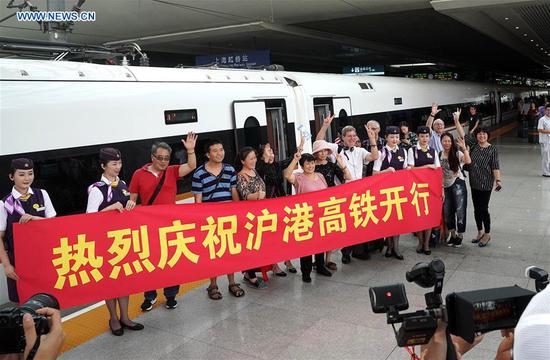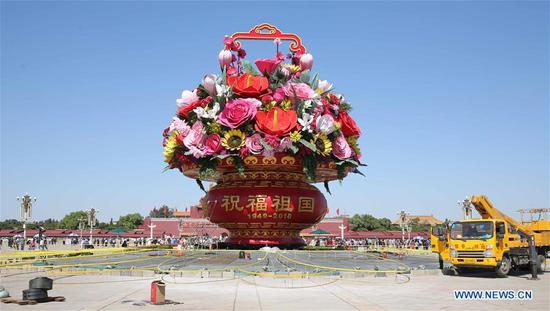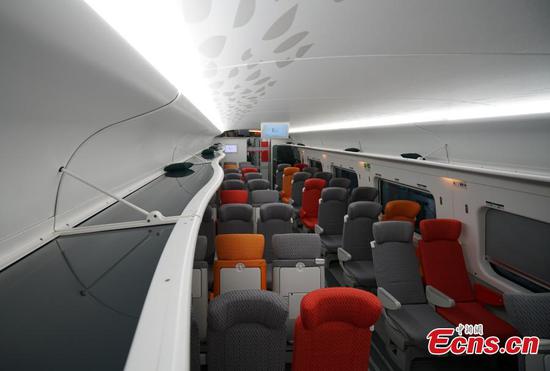
Passengers of train G99 pose for a group photo at Hongqiao Railway Station in Shanghai, east China, Sept. 23, 2018. Train G99, the first high-speed train from Shanghai to Hong Kong, left Hongqiao Station on Sunday for Hong Kong West Kowloon Station. (Xinhua/Chen Fei)
The Hong Kong section of the Guangzhou-Shenzhen-Hong Kong Express Rail Link (XRL) opened Sunday.
It now takes 14 to 19 minutes to travel between high-speed train stations of Shenzhen Futian and Hong Kong West Kowloon.
Bullet trains also departed Sunday from Beijing and Shanghai, to Hong Kong. The travel time is about 9 hours from Beijing to Hong Kong. It used to exceed 24 hours.
The length of China's high-speed rail network had totaled 25,000 kilometers by the end of 2017, the longest of its kind in the world.
"The XRL train has slashed my commuting time to one hour from three hours," said Alex Leung, a Hong Kong entrepreneur working in Shenzhen who is considering moving his office closer to Futian high-speed railway station.
Michael Chong is thinking the other way around.
"Quite a few Hong Kong people choose to work in Hong Kong and live in Shenzhen. There is no doubt that the XRL will bring more convenience," he said. "It might be possible for me to rent a spacious flat in Shenzhen again."
Chong, who works for a travel agency in Hong Kong, used to live in Shenzhen but the long commute forced him back to Hong Kong. "The XRL will cut travel time from Hong Kong to many inland tourist attractions, too," he said.
The high-speed trains depart every 10 minutes from stations on the XRL network. Most tickets for the Mid-Autumn Festival and the week-long National Day holiday have sold out since becoming available on Sept. 10.
Chong said that a number of Hong Kong residents had booked his travel agency's travel-inland packages by high-speed train in October.
The Chinese government resumed sovereignty over Hong Kong on July 1, 1997. A grand ceremony was held to mark the 20th anniversary of the return of Hong Kong to the motherland on July 1, 2017.
Last year, 241 million travels passed the Shenzhen port, a daily average of more than 662,000, according to the Shenzhen General Station of Exit and Entry Frontier Inspection.
Most travelers went for business, study, shopping or tourism.


















































